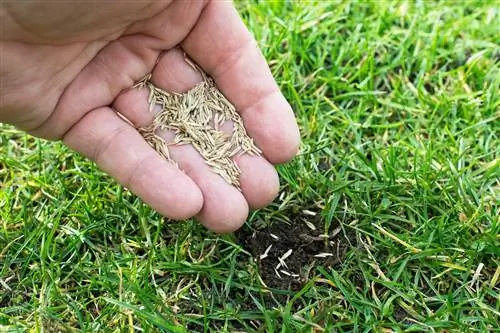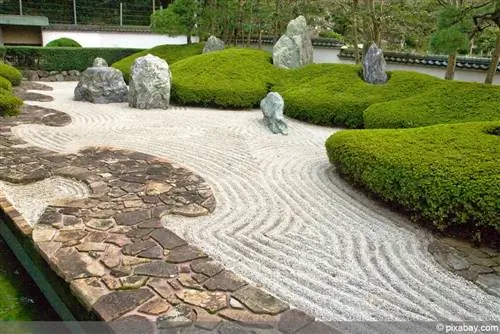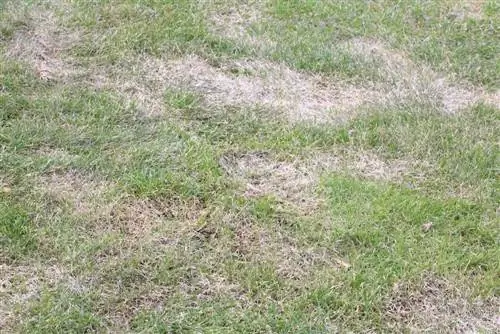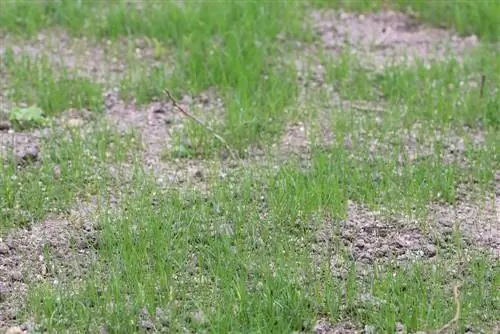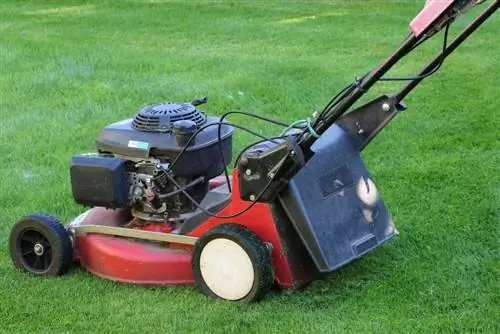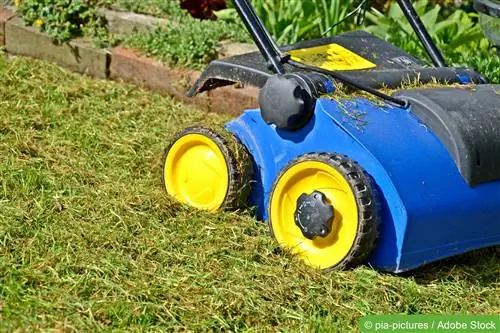- Author admin [email protected].
- Public 2023-12-17 03:39.
- Last modified 2025-01-24 12:45.
Which hobby gardener doesn't dream of a thick, lush green lawn? Bare spots not only look unsightly, but also encourage weed growth. But can you re-seed the lawn without scarifying it first?
Reseeding without scarifying
Reseeding the lawn without scarifying is only advisable if individual bare spots or smaller gaps in the lawn need to be repaired. Here it is sufficient to roughen up the affected areas a little with a rake. If the entire lawn area is affected, it cannot be done without scarifying, which is one of the most important steps in lawn care. When repairing smaller areas, the most important thing is timing and using high-quality reseeding.
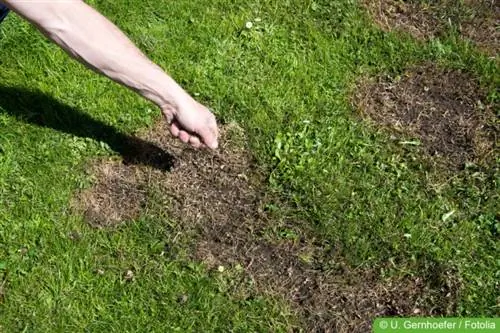
Gaps and bare spots in the lawn should be repaired as quickly as possible. Otherwise the damage will become greater and can no longer be removed without scarifying.
Note timing
- Reseeding possible in spring or autumn
- Mid-April to early May or September to October
- mild temperatures required
- Soil temperature constantly above 10 degrees
- evenly moist soil until germination
- Days with frost, heat and heavy rain are unsuitable
- also avoid dry periods in summer
Note:
Even if reseeding is possible in spring and autumn, you should prefer autumn because here the soil is still sufficiently warm due to the residual heat of the summer and is usually moist enough, which makes germination easier.
Use high-quality reseeding
As far as the actual seeds are concerned, they should be of as high quality as possible in order to achieve the best possible results. It should be able to withstand different demands depending on location and use. Especially when improving or repairing the lawn, it is best to use the same lawn seed as for the existing lawn, provided you still have some leftover seed in stock. Alternatively, so-called mixed products are available. These are combination products that contain both lawn seed and fertilizer as well as a germination substrate.
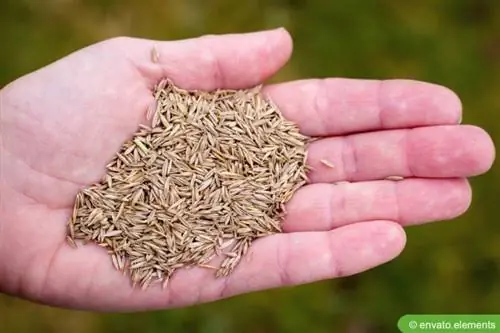
Tip:
Special seed mixtures are available for large areas. They have the advantage that they contain types of grass that germinate quickly and reliably even under unfavorable conditions, sometimes from a soil temperature of five degrees.
Prepare the substrate
- mow the entire lawn first
- remove dead plant and root residue from bare areas
- Removing moss, weeds and stones
- roughen affected areas with a rake
- incorporate some sand into loamy soils
- Improve sandy substrates with clay powder or compost
- promotes the storage capacity of the soil
- if in doubt, test the soil condition
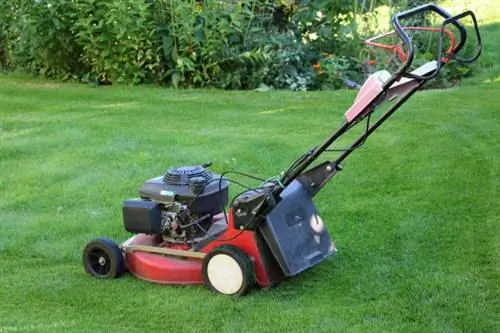
Sowing seeds
- Distribute lawn seeds evenly
- about 20 g per square meter
- alternatively mix seeds with potting soil and distribute
- then press or roll the seeds with a footboard
- water with a soft jet of water
- do not enter the worked area in the following weeks
- water daily, keep constantly moist
- Mow grasses from a height of 8-10 cm for the first time
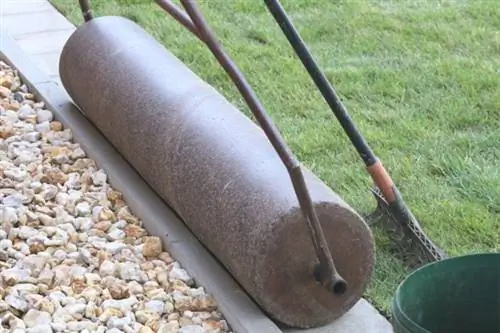
Note:
For most reseeds, the germination time is between 7 and 14 days.
Frequently asked questions
Can you sow too much lawn seed?
Yes, this is possible and can result in individual seedlings dying and the resulting limited aeration of the soil causing thatch to form. As a rule, an amount of up to 30 g per square meter is not critical. It is best to follow the specifications of the respective manufacturer.
What can cause gaps in the lawn?
Such damage can be caused by excessive stress and the associated unfavorable lawn seeding, as well as by compacted soil or animal tenants such as voles and moles. In some places, burnt lawn grass due to excessive sunlight can also be the cause.
Why does scarification have to be done at all?
When scarifying, thatch is removed and the soil is aerated. Water and nutrients can be sufficiently absorbed by the grasses again. If you do without this, mosses, weeds and thatch will continue to spread, which weakens the blades of grass and eventually causes them to die.
What role does the location play when sowing lawns?
Particularly resistant and quickly regenerative seeds are an advantage on heavily used areas. Even in very sunny and drier locations, you should pay attention to particularly robust lawn seeds. Mixtures that germinate even in low light conditions are ideal for shady areas.

